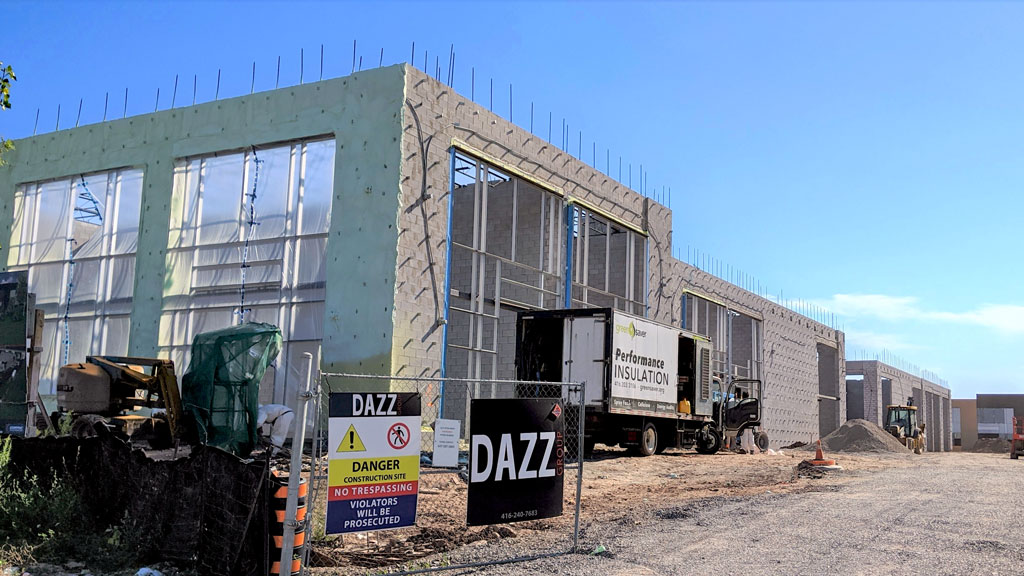Recent construction statistics showing a cratering in the value of ICI building permits in June are not necessarily cause for alarm says Katherine Jacobs, director of research for the Ontario Construction Secretariat (OCS).
Reporting Aug. 11 on recent Statistics Canada data, the OCS found that Ontario’s ICI permit values declined by 18 per cent in June after increasing to pre-pandemic levels in May. June’s ICI permits were valued at just over $1 billion, the lowest monthly total in two years aside from April 2020.
As for the three sectors within ICI, the swings were even greater — institutional permit values increased by 60 per cent in June to their highest monthly total of the year, but commercial values fell 39 per cent and industrial values fell by 25 per cent over last month.
“We do have some concern. The builder permit numbers are pretty erratic, and they are not usually that erratic on a provincial level,” Jacobs said, differentiating between provincewide statistics and local reports that can swing month to month. “We have some questions and we see some possible challenges at the city level getting permits issued, so we wonder if that is what we are seeing.”
It’s possible that city building departments were experiencing a backlog in June, Jacobs suggested.
Half-year figures produced more positive statistics. Ontario’s ICI permit values are less than two per cent lower so far in 2020 than they were in the January-June period last year despite the poor spring months when the COVID-19 pandemic hit. Industrial permit values in January-June are down 25 per cent compared to the first half of 2019, while commercial and institutional values were up by seven per cent and four per cent respectively.
Jobs numbers across the whole sector were also good, the OCS reported, with overall construction employment in July spiking compared to the previous month. Employment in the construction industry increased for the third consecutive month in July, adding 13,400 new jobs. The 515,000 jobs recorded in the industry represents five per cent less than in July of last year and about nine per cent less than the 2020 high in February.
I am cautiously optimistic for the balance of 2020 given the current amount of work already underway
— Katherine Jacobs
Ontario Construction Secretariat
Jacobs stressed it’s important to evaluate a wide range of indicators over time. She and her colleagues take their cues from a variety of indicators including building investment data, employer confidence and hiring intention surveys and even crane counts in addition to employment data and building permits.
“I am not convinced there is just one indicator that we can watch right now,” Jacobs remarked. “Looking at the economy as a whole compared to construction, looking at the GDP is obviously important there. And it’s also important to look at what’s driving GDP. What is the underlying story to that? Is it coming from construction, manufacturing, consumer spending? Those are pretty important indicators.”
The OCS has produced three comprehensive contractor surveys, conducted April 22 to 29, May 11 to 15 and June 16 to 19, that have been widely quoted during the pandemic, and has regularly posted analysis of varied Statistics Canada reports in a bid to satisfy the industry’s hunger for data it can base decisions on, Jacobs said.
Of the three ICI sectors, Jacobs said the one with the bleakest future seems to be commercial.
“It is a large component of ICI. It is about half of the building permits. So in the months to come, there could be commercial challenges. There will be stores that will be closing, restaurants that will be closing…there is still office tower construction going on downtown but there is going to be some vacant space in the years to come with people transitioning to working from home.”
Jacobs said she is uncertain where the industrial sector will go but institutional spending looks positive with governments spending on transit, hospitals, schools and long-term-care homes — and it would really take up the slack compared with the other two sectors if there were major government stimulus spending on infrastructure, Jacobs commented.
“It is very important for the construction industry,” she said. “There are over 500,000 people plus employed by the construction industry, so that is an opportunity to ensure those people are at work and paid well and able to contribute to the economy. The added benefit of having new infrastructure, it is important to the economy that much more going forward.”
As for a forecast, Jacobs has more optimism for the rest of 2020 than she does for 2021.
“I am cautiously optimistic for the balance of 2020 given the current amount of work already underway that will continue to the end of the year. I believe the construction industry is well prepared to work through a potential second wave of COVID this fall.
“The outlook for 2021 will depend on how quickly any new infrastructure stimulus funding is put in place. That, combined with concerns about the commercial sector, leads me to be more cautious about the 2021 outlook.”
Follow the author on Twitter @DonWall_DCN.











Recent Comments